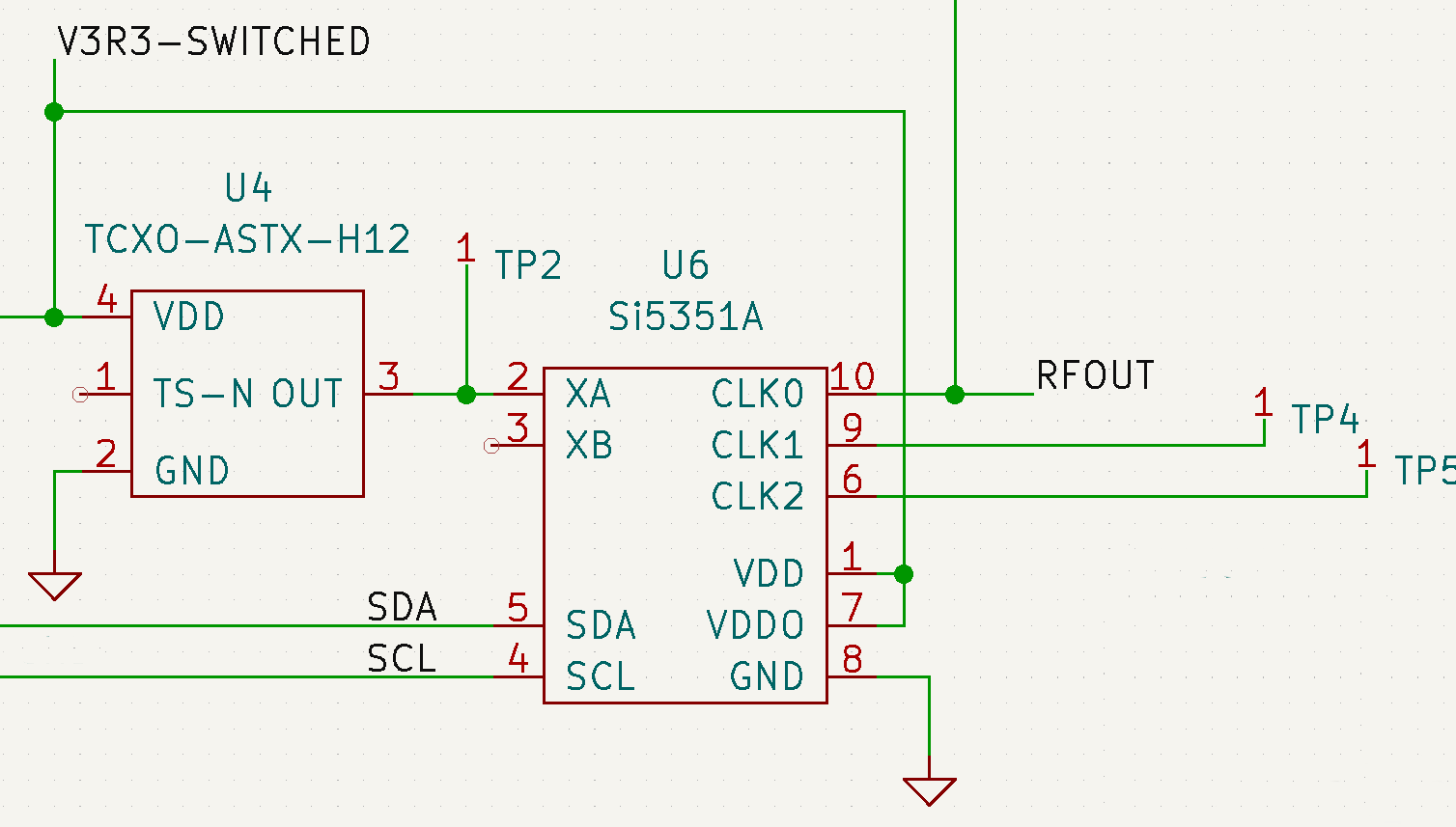The Si55351 Clock Generator chip is a real workhorse. Give it a clock reference (10 – 40 MHz), or a crystal (25 – 27 MHz) and it can generate three different output frequencies, between 2.5 KHz and 200 MHz. There are two internal PLLs that can run from 600 MHz to 900 MHz, with fractional synthesis feedback dividers that can provide extremely high resolution. Each of the three output pins is driven by a fractional divider, and a smoothing filter that significantly reduces the frequency transients caused by the digital dividers, providing quite a spectrally pure output for such an inexpensive device (about $1). There are more features such as spread-spectrum dithering, and phase offset control (the phase offset can be used to drive quadrature modulator and demodulator architectures.)
With the fractional dividers used in both the PLL feedback and the three output stages, with some restrictions milli-Hertz frequency resolution can be obtained over the full frequency range. Frequency accuracy is determined by the accuracy of the reference or crystal input. Configuration of the chip is done using a I2C interface.
In the drift-buoy I am using the Si5351 to generate the 30-meter (10.10 – 10.15 MHz) CW and FSK carrier frequencies. The 3.3V logic level output of this chip feeds a small 1W class-E power amplifier, which drives a short whip antenna. The FSK modes being used are APRS (2-FSK, 300 Baud, +/- 100 Hz), WSPR (4-FSK, 1.4648 Baud, 1.4648 Hz tone spacing), and FT8/JS8 (8-FSK, 6.25 Baud, 6.25 Hz tone spacing).
Given all the options and flexibility of the chip, there are many ways to generate a specific output frequency. When generating the FSK frequencies there are many factors to consider. In the following posts I will cover:
- Selecting and setting the fractional divider values
- Generating Gaussian Frequency Shift Keying
- Increasing the Si5351 register update rate
Next: FSK with the Si5351 Clock Generator (Fractional Dividers)
